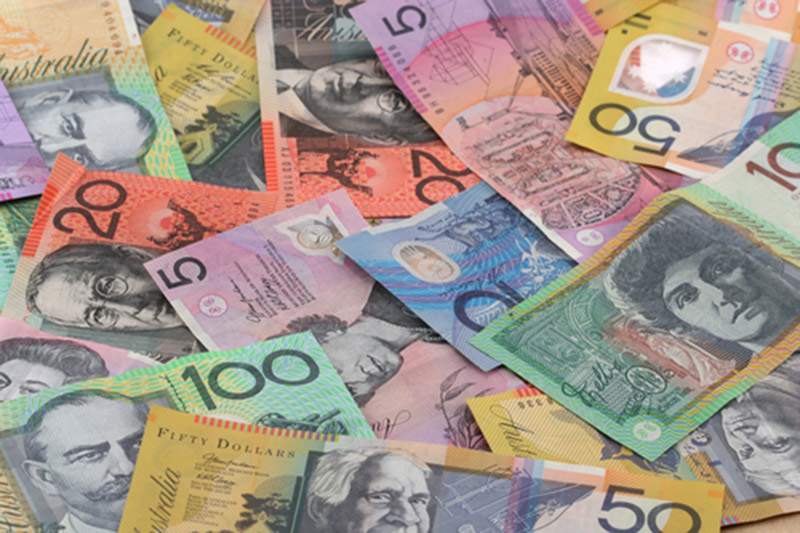* Aussie jumps after RBA tones down its weak currency views
* Canadian dollar recovers slightly from 11-year low
* Dollar just down vs euro, yen as commodity currencies improve (Updates throughout)
By Patrick Graham
LONDON, Aug 4 (Reuters) - Major currencies closely linked to commodities prices recovered some ground on Tuesday after a rough few weeks, as oil prices steadied and Australia's central bank changed its tone.
The Aussie dollar rose 1.25 percent to an almost two-week high after the Reserve Bank dropped a long-used reference in its post-policy-meeting statement to a further decline of the currency being necessary.
The New Zealand dollar, which often tracks the Aussie, gained around half a percent, while the Canadian dollar, helped by a steadying of prices for Brent and U.S. crude, clawed its way back from an 11-year low of almost $1.32.
The dollar, euro and yen EUR= JPY= were all little changed, with the dollar index against a basket of currencies down 0.1 percent on the day. .DXY
"It's all been about the commodities units again this morning," said a dealer with an international bank in London. "There's been some recovery but I wouldn't hold my breath, the outlook for them all still looks weak."
Oil sinking below $50 a barrel, allied to stock market turmoil in China and continuing broader risks to world growth, all make for a nervy backdrop to interest rate move by the U.S. Federal Reserve later this year.
After seven years of zero or virtually zero official borrowing costs in the world's main currency, a Fed hike will be a shock for many economies, particularly in the developing world. Concern about how that affects Chinese companies that have borrowed heavily in dollars has weighed on commodities prices and in turn on developed currency markets, on the Aussie, kiwi, Canadian dollar and Norwegian crown.
"I wouldn't rush out to declare the four-year downtrend in the Aussie against the dollar over, but it's not the most attractive short looking forwards," said Kit Juckes, a strategist with Societe Generale (PARIS:SOGN) in London.
"Since the Aussie peaked in July 2011, as well as falling by a third against the dollar, it has fallen by 12 percent against the kiwi for example, and AUD/NZD has a lot of upside as a result now relative rates are moving in the Aussie's favour."
In early trade in Europe, the Aussie extended its gains to 1.4 percent on the day at $0.7395, recovering from a six-year trough of $0.7234 set last week.
The Canadian dollar last traded at C$1.3118 per U.S. dollar, recovering from C$1.3176 - its lowest since August 2004.
"The longer that crude takes to recover, the greater the risk to energy capex plans for 2016 which in turn feeds into the Bank of Canada's projections and lowers the hurdle for further easing down the line," said Elsa Lignos, senior currency strategist at RBC Capital Markets.
"Next resistance targets for USD/CAD are 1.3246 and 1.3383 though it will take ongoing crude weakness to maintain the USD/CAD rally." Crude prices were up by 0.7-1.0 percent.
Dollar bulls are now counting on non-farm payrolls on Friday to strengthen the chances of a September rate hike. The euro was marginally higher at $1.0961. (editing by John Stonestreet)
